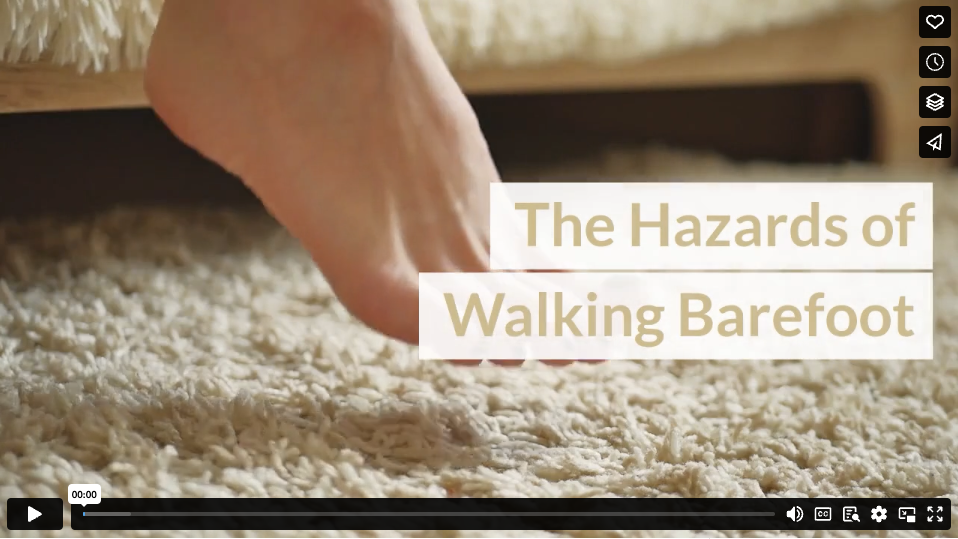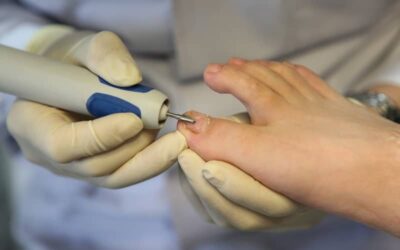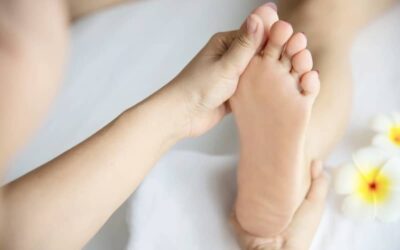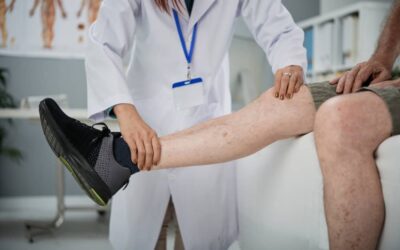Walking barefoot. It’s a simple pleasure that many of us enjoy, especially during warmer months or in the comfort of our own homes. However, while going shoeless may feel liberating, it’s important to recognize that walking barefoot comes with its fair share of risks and dangers.
Let’s explore the potential damages and injuries that can result from walking barefoot, discuss ways to remediate any issues, and explore the best alternatives to going shoeless.
The Dangers of Walking Barefoot
While walking barefoot may seem harmless, it can actually leave you vulnerable to a variety of injuries and health issues. Here are some of the potential dangers to be aware of:
- Cuts and Scrapes. Without the protection of shoes, your feet are susceptible to cuts, scrapes, and puncture wounds from sharp objects such as glass, rocks, or debris.
- Bacterial and Fungal Infections. Walking barefoot exposes your feet to bacteria, fungi, and other pathogens present on the ground. This increases the risk of developing infections such as athlete’s foot, plantar warts, or even tetanus in the case of puncture wounds.
- Sunburn and Heat-Related Issues. Walking barefoot exposes your feet to direct sunlight, increasing the risk of sunburn and heat-related issues such as blisters or burns from hot surfaces like sand or pavement.
- Strain and Overuse Injuries. Walking barefoot can lead to strain and overuse injuries, especially if you walk on hard or uneven surfaces for extended periods. This can result in plantar fasciitis, Achilles tendonitis, stress fractures, or other injuries.
- Knee and Back Issues. If your feet aren’t properly supported, you may compensate with other parts of your body. As a result, your knees and back can sustain injuries or sore muscles from unsupported arches.
Remediation and Prevention
If you’ve experienced any damage or injuries from walking barefoot, there are several steps you can take to help them heal and prevent further problems.
- Clean and Treat Wounds. If you’ve sustained cuts, scrapes, or puncture wounds from walking barefoot, it’s important to clean the affected area thoroughly with soap and water and apply an antiseptic ointment to prevent infection. Cover the wound with a clean bandage or dressing and monitor it closely for signs of infection.
- Seek Medical Attention. If you’ve sustained a serious injury such as a deep cut, puncture wound, or suspect a fracture, it’s important to seek medical attention promptly. Your healthcare provider can assess the extent of the injury and recommend appropriate treatment, such as stitches, antibiotics, or immobilization. If you develop a more serious problem, such as plantar fasciitis or arch pain, you will want to visit a podiatrist for recommendations on your next steps.
- Practice Good Foot Hygiene. To prevent bacterial and fungal infections, you must practice good foot hygiene. This includes washing your feet regularly with soap and water, drying them thoroughly, and wearing clean socks and shoes to help protect your feet from environmental pathogens. (Your family’s noses won’t be sad about you taking this step, either.)
- Wear Protective Footwear. Wear appropriate footwear whenever possible. This will minimize the risk of injury and protect your feet from the dangers of walking barefoot. Choose shoes that provide adequate support, cushioning, and protection for your feet, and avoid walking barefoot in hazardous environments. Custom orthotics can be a wise choice to provide the support you need.
Alternatives to Walking Barefoot
If you’re looking for alternatives to walking barefoot that offer the same sense of freedom and comfort without the associated risks, consider the following options:
- Supportive Sandals or Flip-Flops. Opt for sandals or flip-flops with supportive soles and straps that provide protection and stability for your feet while still allowing them to breathe.
- Indoor Slippers or Socks. When walking around inside your home, consider wearing indoor slippers or socks with non-slip soles to provide warmth and protection for your feet without the need for shoes.
- Water Shoes. For activities such as swimming, kayaking, or walking on the beach, consider wearing water shoes that provide traction and protection for your feet while still allowing them to get wet.
- Barefoot Shoes. If you’re committed to the barefoot lifestyle but want some added protection, consider investing in barefoot shoes that mimic the natural shape and movement of your feet while providing a thin, flexible sole for added protection.
So, before you kick off your shoes and go barefoot, remember to tread carefully and prioritize the health and safety of your feet.
Video




